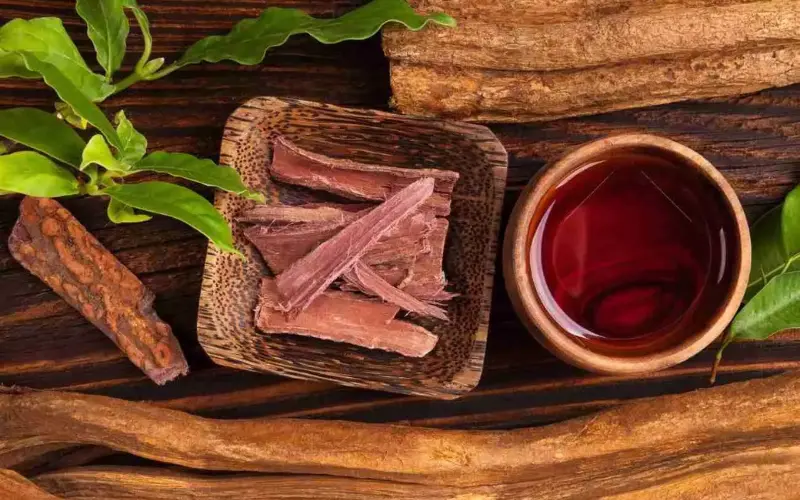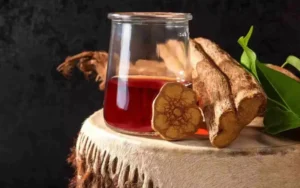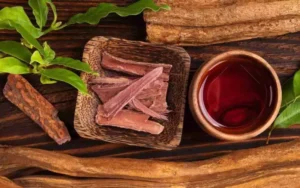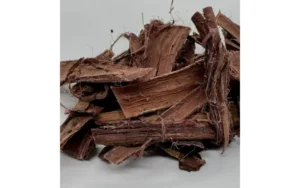Quick Answer: Yes, Mimosa hostilis (Mimosa tenuiflora) is completely legal to possess, cultivate, and use in the United States. The plant and all its parts, including root bark, are not classified as controlled substances under federal law.
In this article we will explore a little more in depth the mimosa hostilis legality in USA, how its conditions change depending on the state you are in and answer some frequently asked questions.
What is Mimosa Hostilis Root Bark (MHRB)?
Mimosa hostilis, also known as Mimosa tenuiflora or Tepezcohuite, is a perennial tree native to southern Mexico and northeastern Brazil. This remarkable plant has been used for centuries in traditional cultural practices and is now gaining worldwide recognition for its diverse ethnobotanical and commercial applications.
The root bark (commonly abbreviated as MHRB) is the most valued part of the tree, containing high concentrations of tannins and other beneficial compounds that make it valuable for:
- Natural fabric and leather dyeing
- Traditional skincare and wound healing
- Soap and cosmetic manufacturing
- Botanical research and education
First, let us identify some of the parts of this tree:
- Flowers
- Seeds
- Leaves
- Bark
- Wood
None of these parts are illegal, controlled, or regulated in the US. As a matter fact, neither is the entire tree, dead or alive. Any of these parts is legal to sell or buy, so is the action of planting seeds and growing these trees. On the other hand, people wanting to import any parts of this tree, or any other tree, may want to consult an attorney, because the rules for importing seeds or parts of plants are different.
The part we will focus this article on, is the root bark, also known as MHRB. Mimosa Hostilis Root Bark offers many benefits, the most popular ones are in the cosmetic industry, or skin care application to treat different skin conditions.
Federal legal status in USA
DEA Classification
According to the U.S. Drug Enforcement Administration (DEA), Mimosa hostilis is not listed as a controlled substance under the Controlled Substances Act. The plant does not appear in any of the five schedules of controlled substances as defined in 21 U.S.C. § 812.
FDA Regulations
The Food and Drug Administration (FDA) treats Mimosa hostilis as a botanical product. Under current FDA botanical guidance, the plant itself is not regulated as a drug or controlled substance when used for legitimate purposes such as:
- Natural dyeing applications
- Soap and cosmetic manufacturing
- Botanical collection and study
- Traditional crafts and arts
USDA Plant Regulations
For domestic cultivation and possession, no special permits are required. However, importing plant materials may require compliance with USDA APHIS regulations to prevent the introduction of plant pests and diseases.
State-by-State Legal Analysis
States Where Mimosa Hostilis is Fully Legal
In 48 out of 50 states, Mimosa hostilis enjoys complete legal status with no restrictions on:
- Possession and personal use
- Cultivation and propagation
- Processing for legitimate applications
- Educational and research purposes
Louisiana Special Considerations
Louisiana is the only state with specific legislation addressing certain botanical species. Under Louisiana State Act 159, some plants are regulated when intended for human consumption. However, Mimosa hostilis remains legal for:
- ✅ Horticultural and ornamental purposes
- ✅ Natural dyeing and crafts
- ✅ Soap and cosmetic manufacturing
- ✅ Botanical research and education
Colorado and Progressive States
States like Colorado, which have enacted progressive botanical legislation, explicitly protect the right to possess and cultivate plants for legitimate purposes under their natural plant protection laws.

Legal Uses and Applications of Mimosa Hostilis
Commercial and Industrial Applications
Mimosa hostilis root bark is legally used across various industries:
Textile and Leather Industry
- Natural red and brown dye production
- Eco-friendly fabric coloring
- Traditional leather tanning processes
Cosmetic and Personal Care
- Anti-aging skincare formulations
- Natural soap manufacturing
- Traditional healing ointments and balms
Arts and Crafts
- Natural fabric dyeing workshops
- Traditional indigenous crafts
- Educational botanical projects
Scientific and Educational Uses
Research institutions and universities regularly use Mimosa hostilis for:
- Botanical taxonomy studies
- Ethnobotanical research
- Natural product chemistry
- Sustainable agriculture research
Import and Transportation Regulations
Legal Framework for Importation
The importation of Mimosa hostilis is legal under U.S. federal law. However, as plant material, it is subject to routine agricultural inspections:
Customs and Border Protection Regulations
- U.S. Customs and Border Protection inspects plant materials to prevent pests
- Standard documentation requirements for botanical materials
- No special permits required specifically for MHRB
Domestic Transportation Legal Status
- Completely legal to transport within the United States
- No interstate restrictions for possession or transportation
- Same regulations apply as for other non-controlled plant materials
Cultivation and Growing Guidelines
Legal Home Cultivation
Growing Mimosa hostilis at home is completely legal throughout the United States. The plant thrives in:
- USDA hardiness zones 9-11
- Well-draining, sandy soils
- Full sun to partial shade conditions
- Warm, humid climates
Seed and Plant Acquisition
- Seeds: Legal to purchase, possess, and plant
- Seedlings: Available from botanical suppliers
- Mature plants: Can be obtained and transported legally
- Propagation: Root division and cutting propagation are permitted

Frequently Asked Questions
Is it legal to possess Mimosa hostilis root bark?
Yes, possession of MHRB is completely legal when obtained for legal purposes such as dyeing, botanical research, or manufacturing natural cosmetic products.
Do I need special registration to use Mimosa hostilis commercially?
No special registrations required beyond standard business permits. Regulations are the same as for other non-controlled plant materials.
Can I grow Mimosa hostilis on my property?
Absolutely. Cultivation of Mimosa hostilis is legal in all 50 states, though the plant grows best in warmer climates (USDA hardiness zones 9-11).
Are there quantity restrictions for possession?
No federal limits exist for possessing Mimosa hostilis root bark for legitimate educational, research, or industrial purposes.
What regulations apply to transportation?
No special transportation restrictions apply. MHRB is treated like any other non-controlled botanical material for domestic transportation purposes.
Legal Framework and Regulatory Compliance
Current Legal Status
Mimosa hostilis operates under a clear and established legal framework in the United States:
- Not classified as a controlled substance under any federal law
- Permitted for possession, cultivation, and use in legitimate applications
- Subject to standard agricultural regulations like any plant material
- Protected under constitutionally recognized botanical freedoms
Compliance Regulations
At the Federal Level
- Compliance with FDA regulations for botanical products
- Adherence to labeling standards for non-consumable materials
- Following USDA import protocols when applicable
At the State Level
- Compliance with local business regulations
- Adherence to state agriculture and horticulture codes
- Following any state-specific regulations (such as in Louisiana)
Recent Legal Developments (2023-2025)
Federal Trends
Recent federal developments show increased acceptance of botanical research and traditional plant uses. The FDA has expanded guidance on botanical products, and USDA has streamlined regulations for non-invasive plant species.
State Legislation
Multiple states have enacted “botanical freedom” legislation protecting the right to cultivate and possess traditional plants for legitimate purposes, further strengthening the legal position of Mimosa hostilis.
Legal Precedents and Court Decisions
Supreme Court Cases
The landmark case Gonzales v. O Centro Espírita Beneficente União do Vegetal (2006) established important precedents regarding botanical materials and religious freedom, though it specifically addressed different plants and circumstances.
Federal Regulatory Interpretations
Federal agencies consistently interpret botanical materials like Mimosa hostilis as non-controlled substances when used for legitimate purposes such as:
- Educational and research applications
- Traditional craft and artistic uses
- Commercial manufacturing of non-consumable products
- Horticultural and ornamental purposes
Rights of U.S. Citizens
Constitutional Protections
Under U.S. law, citizens have established rights regarding botanical materials:
- Right to possess non-controlled plant materials
- Right to cultivate legal plants on private property
- Right to research and study botanical specimens
- Right to use for traditional and cultural applications
Legal Protections
The legal status of Mimosa hostilis is protected by:
- Federal non-scheduling under the Controlled Substances Act
- Agricultural freedom under USDA guidelines
- Commercial use rights under FDA botanical regulations
- Constitutional protections for legitimate plant use

Conclusion: Mimosa Hostilis Legality Status Summary
Mimosa hostilis is completely legal in the United States under federal law and in all 50 states. U.S. citizens have the legal right to:
- ✅ Possess root bark for legitimate purposes
- ✅ Cultivate the plant on private property
- ✅ Transport plant material within the United States
- ✅ Use for traditional applications like dyeing, research, and crafts
- ✅ Process for legitimate industrial and cosmetic purposes
The plant’s legal status is firmly established and protected under current U.S. law. Mimosa hostilis does not appear on any controlled substances lists and enjoys the same legal protections as other non-regulated botanical plants.
Important Legal Clarification: The possession, cultivation, and use of Mimosa hostilis for legitimate purposes does not create legal issues for U.S. citizens. The plant is classified as legal botanical material under all federal and state jurisdictions.
Legal Disclaimer: This information is provided for educational purposes based on current U.S. federal and state laws. While Mimosa hostilis is legal, always consult with qualified legal counsel for specific legal questions related to your particular situation or needs.










